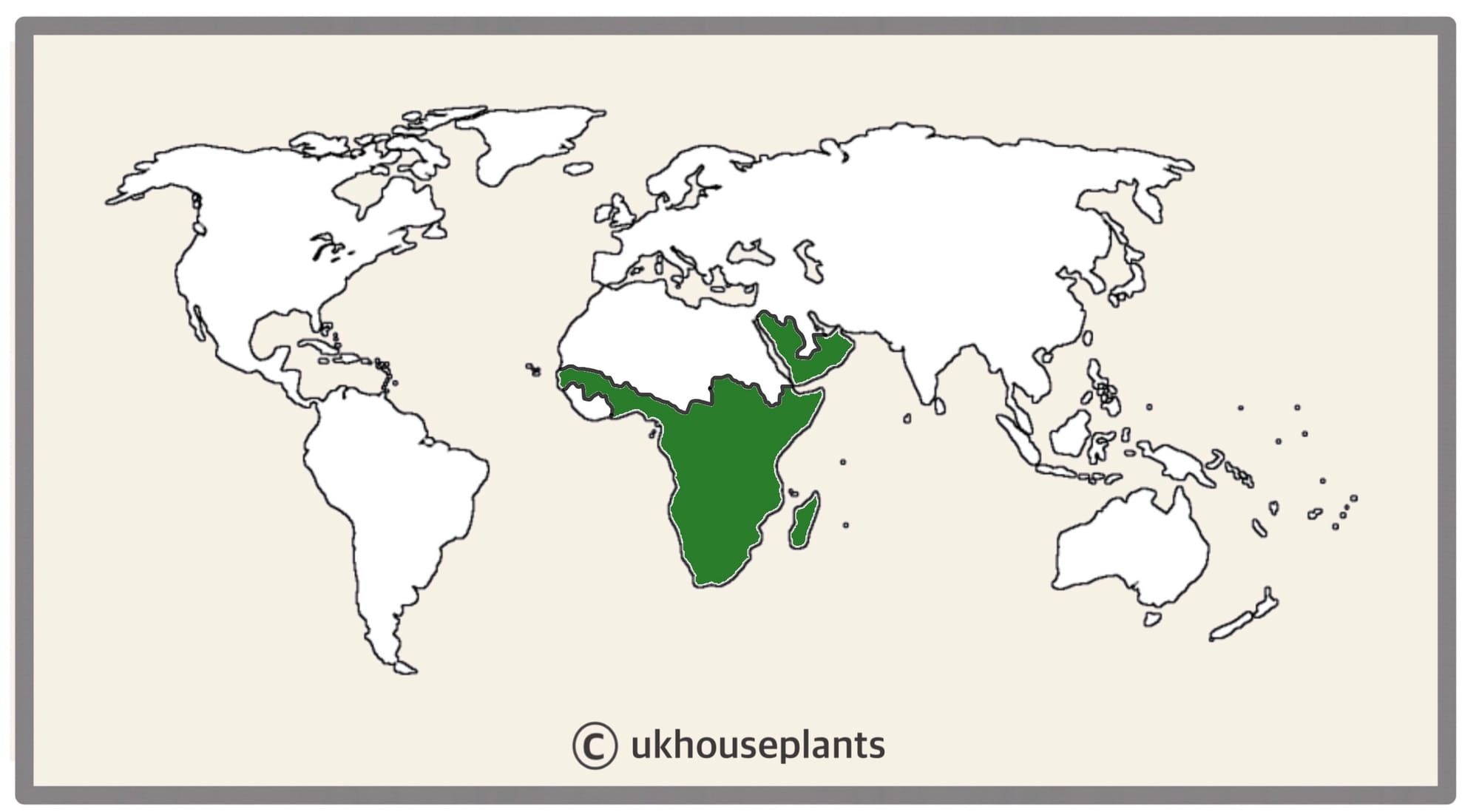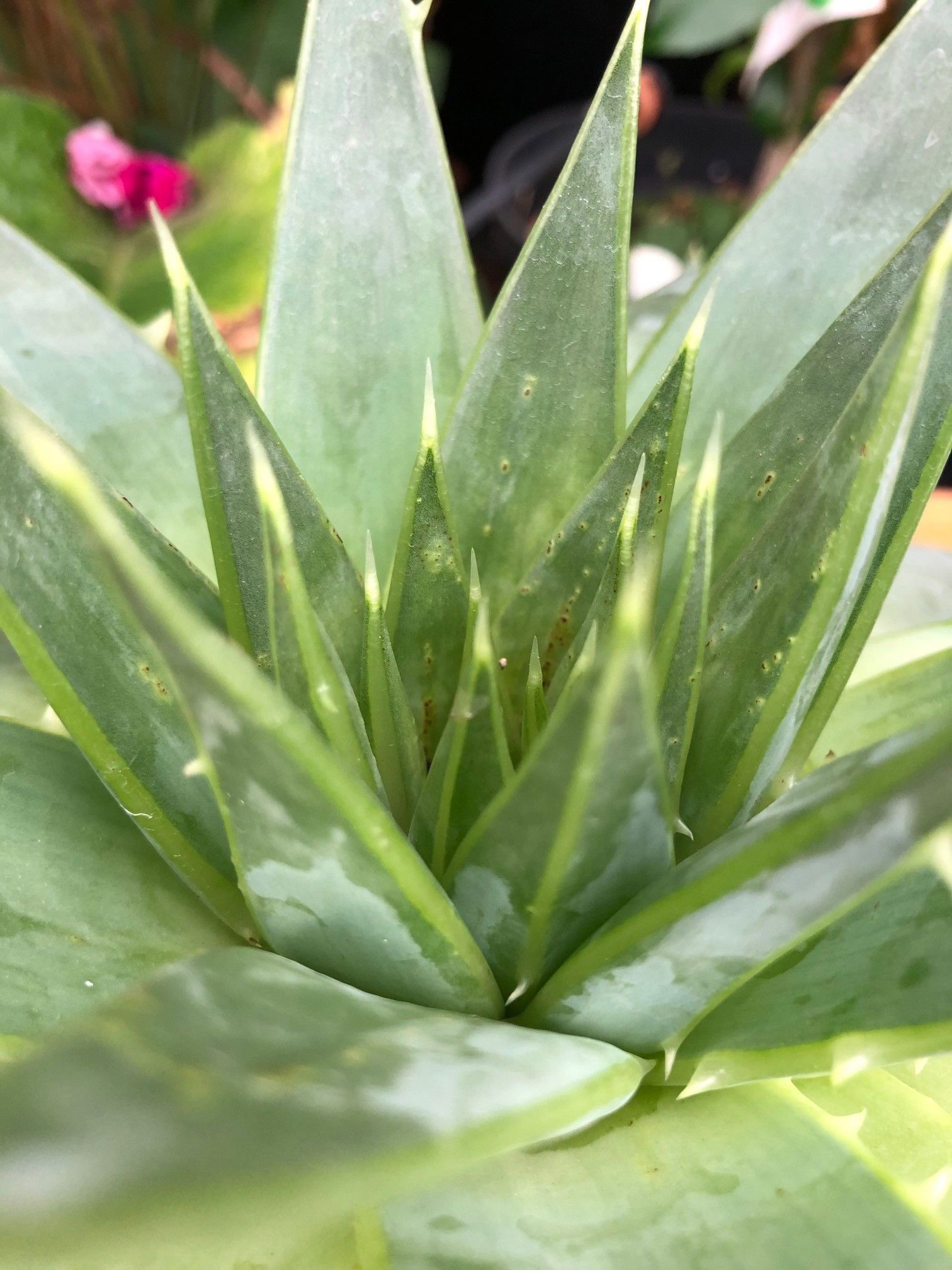
Aloe polyphylla
Contents
- Top Tips
- Location, Water, Humidity & Fertilisation
- Common Issues
- Origins, Temperature, Propagation, Repotting & Toxicity
Need the answer to a specific plant query? Book a 1-to-1 video call with THE HOUSEPLANT DOCTOR™, the website's friendly author to overcome and address your niggling problem! Available on iMessage, WhatsApp, Facebook Messenger & more.
Top Tips & Info
- Care Difficulty - Easy
- A few hours of morning or evening sun is mandatory, especially in the winter months.
- Aloes must endure periods of droughts in between waters - if you're stuck with when to water it, think of the ukhouseplants' phrase of 'Drenches Between Droughts'.
- Be careful when watering - allowing excess moisture to sit in the cubbyholes of the stem will result in diseases like southern blight and 'heart rot'.
- Fertilise every two months using either a 'Cactus' or 'Houseplant' labelled feed.
- Repot every third spring, using a 'Cactus & Succulent' labelled potting mix. This is the perfect time to propagate the small offshoots that'll form at the base of the crown.
Location & Light - 🔸🔸🔸
A few hours of direct sunlight is a must; shady locations could lead to diseases associated with over-watering. The frequencies of hydrations solely rely on the amount of the sun received. If the Aloe begins to develop a discoloured white crown, this is typically down to too little light. Newly-propagated 'pups' must not receive any sunlight as their insufficient root systems will not soak up enough moisture to survive the harsh rays.
Water - 🔸
During the growing period, thoroughly water the soil every ten to fourteen days, allowing the soil to dry out in between. Winterising your Aloe is essential to maintain good health; keep the plant 'ticking over' by reducing the number of irrigations to every three weeks and avoid over-fertilisation. One word of advice is never to allow excess moisture to settle either in the actual crown of the plant or underneath the pot, as both will cause southern blight or even black rot. Under-watering symptoms include drooping leaves, stunted growth, and drying leaves; these can be a range of different issues, including forgetfulness, too much sunlight, or the plant being pot-bound. Over-watering symptoms include root rot, a rotting base, or sudden plant death. Aloes must have sufficient light levels (at least two hours of direct sunlight a day) to counteract the chance of root rot. For more severe cases, click on this link below to learn about how to address root rot.
Humidity -
This is not a factor; however, if the Aloe is situated indoors, a quick hose down from time to time will reduce the number of dust particles covering its leaves.
Fertilisation - 🔸
Aloes mostly grow in nutrient deficient soils in the wild, so with this in mind, fertilise every two months throughout the year using either a 'Houseplant' or 'Cactus & Succulent' labelled feed as it'll support the vital thirteen nutrients that this species will need to grow.
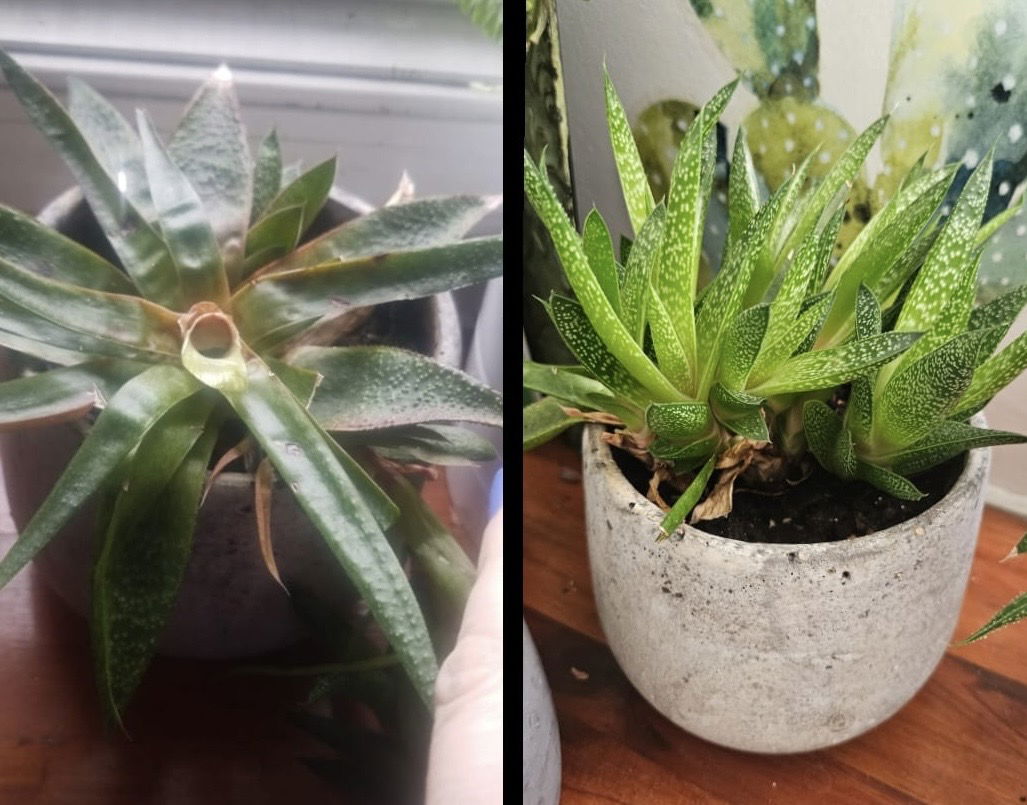 When an Aloe has 'heart rot' as photoed on the left, it can be difficult to bring the specimen back to life. In cases like this, remove all sunken/rotten leaves and keep the potted plant in a bright, sunny windowsill. Water sparingly and wait for new growth. The righthand image was taken six months later following this article's tips!
When an Aloe has 'heart rot' as photoed on the left, it can be difficult to bring the specimen back to life. In cases like this, remove all sunken/rotten leaves and keep the potted plant in a bright, sunny windowsill. Water sparingly and wait for new growth. The righthand image was taken six months later following this article's tips!
Common Issues with Aloe
Over-watering is the most common issue, with typical signs including rapidly-yellowing lower leaves, a softened/wilted centre and blackened foliage. There must be periods of droughts to replicate the habitats of the east African deserts, as well as limiting the chance of diseases. Avoid waterlogging as there's no point fulfilling the phrase 'drenches between droughts' if the base of the pot is submerged. It'll be a 50/50 chance for the plant to survive, so for more information about over-watering related issues, be sure to click on this link. (See image above for a specimen that came back after following the tips on the link).
Reddened leaves are the product of too much sunlight, most common during the height of summer. A pigmentation called 'Carotenoids' will alter the appearance of your plant to counteract the harsh effects of the UV rays. This doesn't mean it'll die, it just a behaviour to keep it from burning in the sun. THE HOUSEPLANT DOCTOR™ recommends to relocate in another windowsill that offers indirect sunlight, like a north-west, north or north-east facing window.
A pale centre and deformed growth are typical signs of too little light. Offer at least an hour of direct sunlight, especially in the winter months, to provide the vital nutrients that'll be converted into plant sugars.
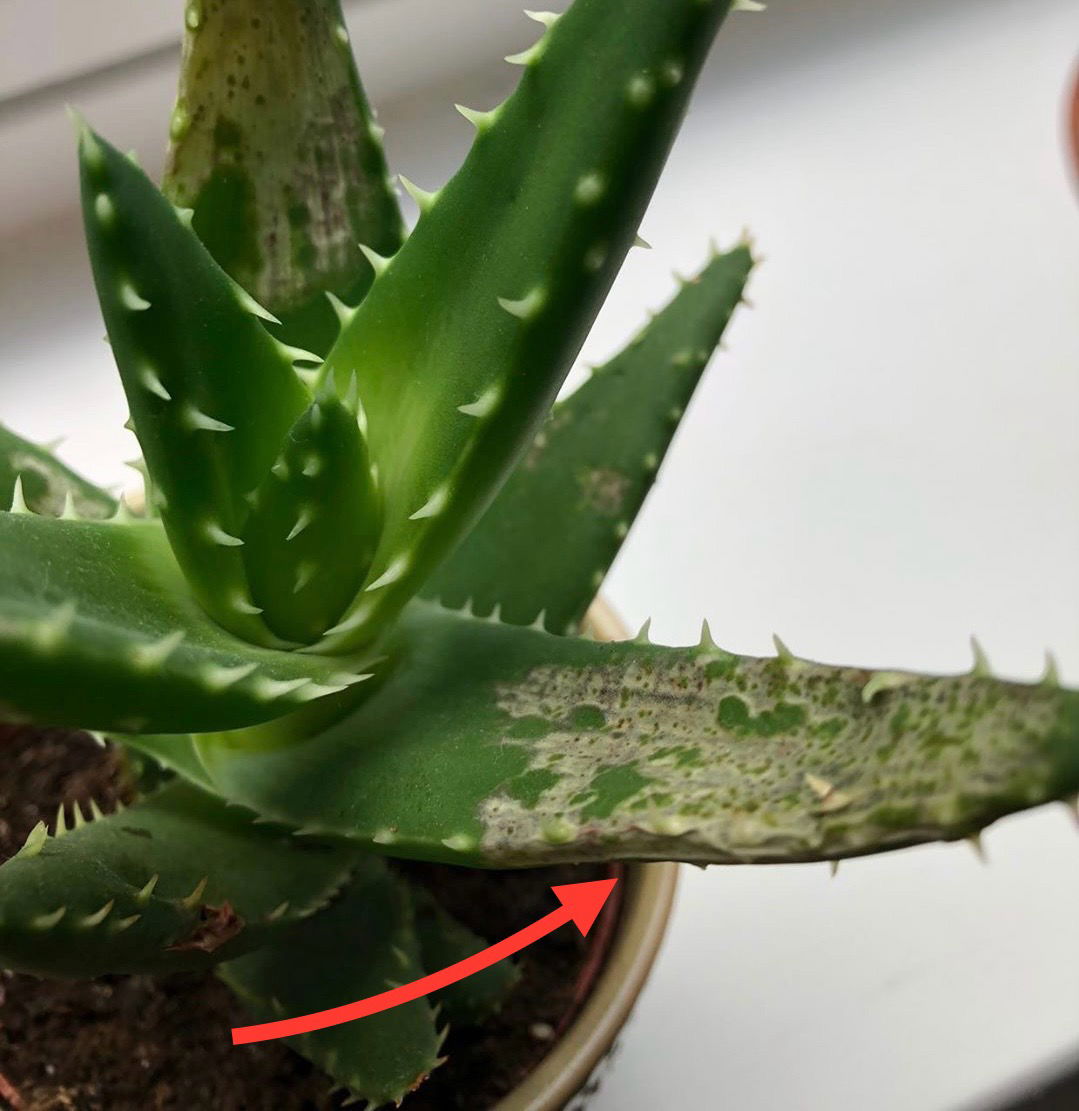
Scabs or browned edges on its leaves are the result of too little water and/or over-exposure to the sun. Although Aloes are a superb choice for plants in sunny locations, those that haven't acclimatised to the harsh rays will show signs of sun-scorch and environmental shock. Prolonged exposure will significantly speed the process of dehydration, so consider transplantation into a bigger pot (in the spring) to wrap the roots around moister soil.
Over-fertilising an Aloe will bring nothing but grief in the likes of yellowing leaves and weak, dramatic growth. Although a three-month feed is an excellent way to promote good health, dry soil and fertiliser salts will quickly lead to the burning of roots. The advice for this issue is to pre-moisten the soil beforehand and reduce the frequency of fertilisations somewhat.
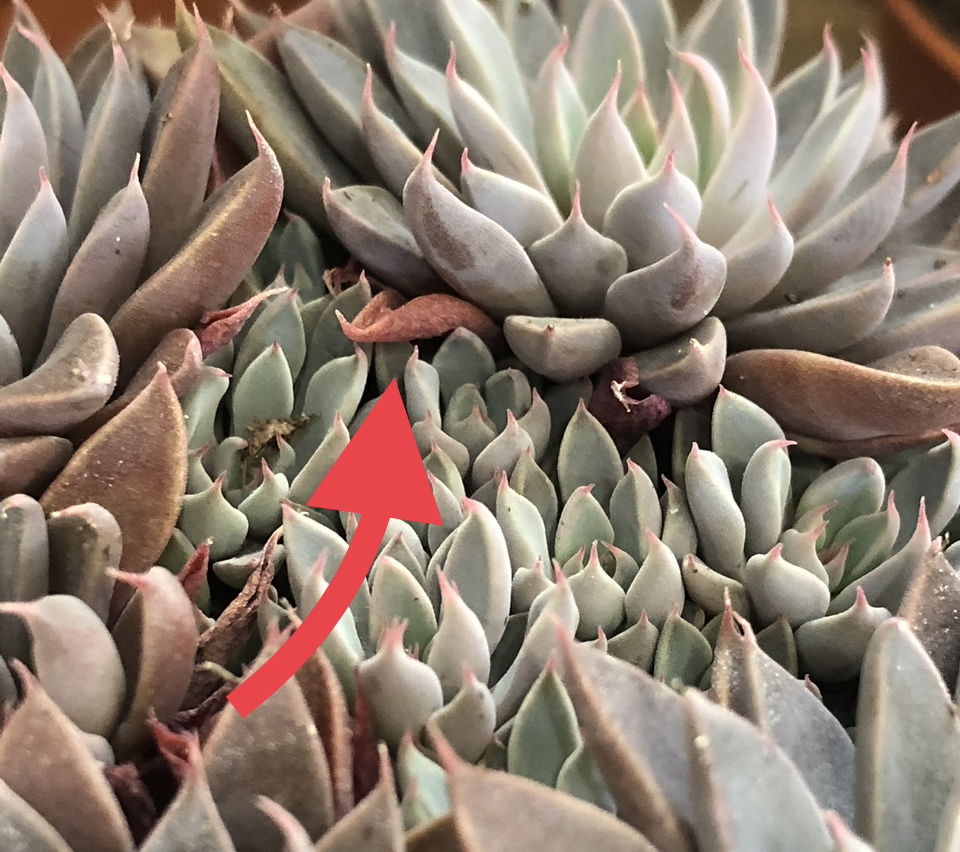 Yellowing or crisping older leaves is a sign of maturity, so no need to panic! If, however, there is an excessive or rapid yellowing of leaves, be sure to check for root rot.
Yellowing or crisping older leaves is a sign of maturity, so no need to panic! If, however, there is an excessive or rapid yellowing of leaves, be sure to check for root rot.
Origins
Aloe consists of over five hundred species, mostly originating from east and Southern Africa - for example, Madagascar, Jordan and some neighbouring islands. Aloes were first formally described in the mid 18th century by Carl Linnaeus using an old English word, alwe, that refers to the scent-similarities of an unknown east Indian tree.
Temperature
10° - 25°C (50° - 78°F)
H1b (Hardiness Zone 12) - Can be grown outdoors during the summer in a sheltered location with temperatures above 12℃ (54℉), but is fine to remain indoors, too. If you decide to bring this plant outdoors, don't allow it to endure any direct sunlight as it may result in sun-scorch and dehydration. Regularly keep an eye out for pests, especially when re-introducing it back indoors.
Spread
Up to 0.7m in height and 1m in width. The ultimate height will take between 5 - 8 years to achieve.
Pruning & Maintenance
Remove yellow or dying leaves, and plant debris to encourage better-growing conditions. While pruning, always use clean utensils or shears to reduce the chance of bacterial and fungal diseases. Never cut through yellowed tissue as this may cause further damage in the likes of diseases or bacterial infections. Remember to make clean incisions as too-damaged wounds may shock the plant, causing weakened growth and a decline in health.
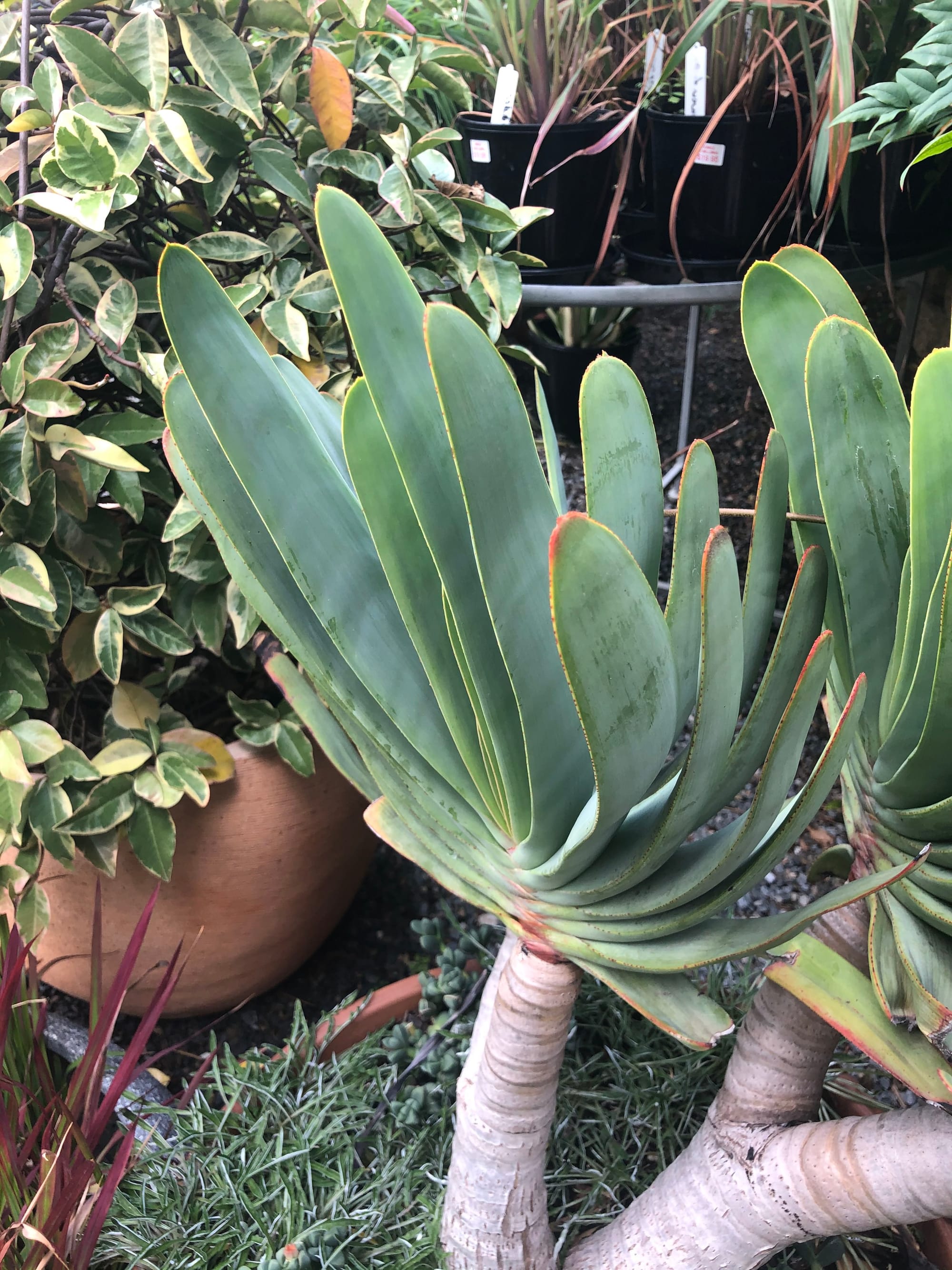 Aloe plicatilis - Fan Aloes
Aloe plicatilis - Fan Aloes
Propagation
Via Seed or Offset Division.
Offset (Pup) Division (Easy) - For this method, it's best to divide in spring or summer and once the offshoots are at least a quarter of the mother plant's size. Remove its pot and place your hand in between the junction that connects the two; soil may have to be brushed away to get a better grip. Gently push the pup downwards while supporting the mother plant until you hear a snap. Cautiously separate the root systems, keeping great care in keeping them damage-free. Place the new plantlet in a small pot with a well-draining potting mix, much similar to the original soil, and maintain the same care routines. 'Cactus & Succulent' compost is best, or you can make your own using multipurpose compost with added grit or perlite. Provide a bright setting with temperatures around 18°C (64°F) with the majority of the soil drying out in between waters. New leaves should emerge within the six weeks, as long as the soil is kept on the drier to life. The image below perfectly illustrates a successful stem cutting.
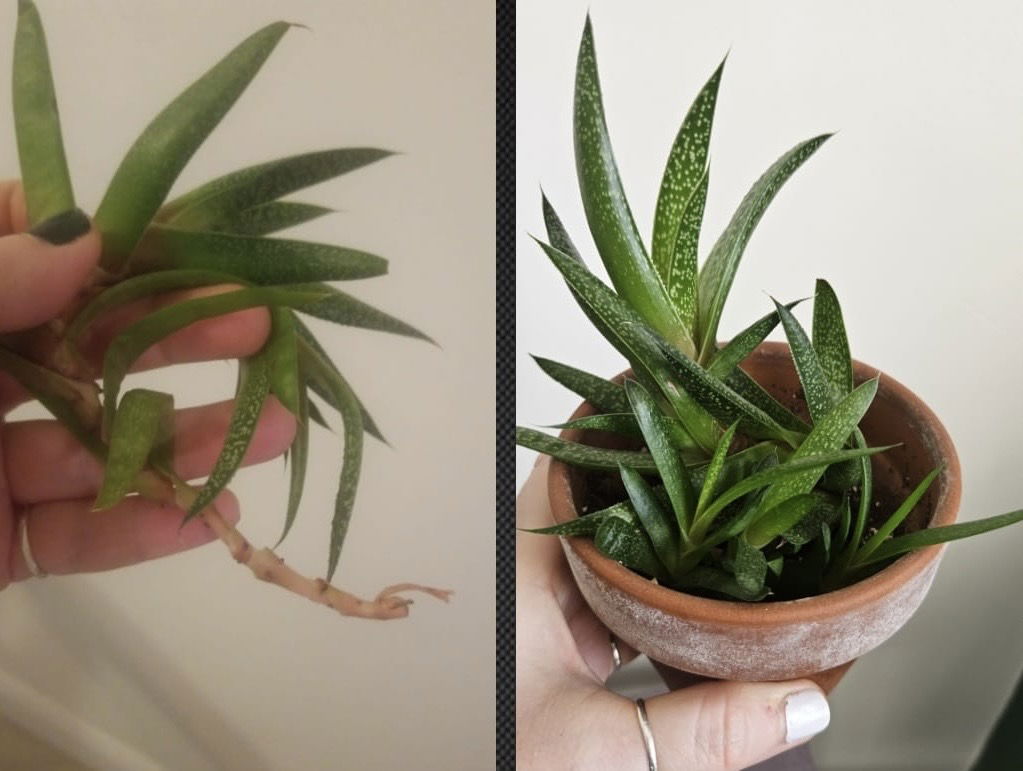 Stem cuttings can revitalise leggy Aloes, or those which have root rot where the main plant itself won't survive. Remember to use 'Cactus & Succulent' potting mix and place in a bright, sunless windowsill whilst new roots emerge in the soil. The time frame between these two photos is only six months!
Stem cuttings can revitalise leggy Aloes, or those which have root rot where the main plant itself won't survive. Remember to use 'Cactus & Succulent' potting mix and place in a bright, sunless windowsill whilst new roots emerge in the soil. The time frame between these two photos is only six months!
Flowers
Yellow flowers are held by a spike that'll develop each year, reaching up to 70cm in height during the spring. Each flower can last up to several days, with the blooming process lasting several weeks. Ensure to keep the plant slightly more hydrated with a fortnightly feed of Cactus Feed during this time to prolong this period.
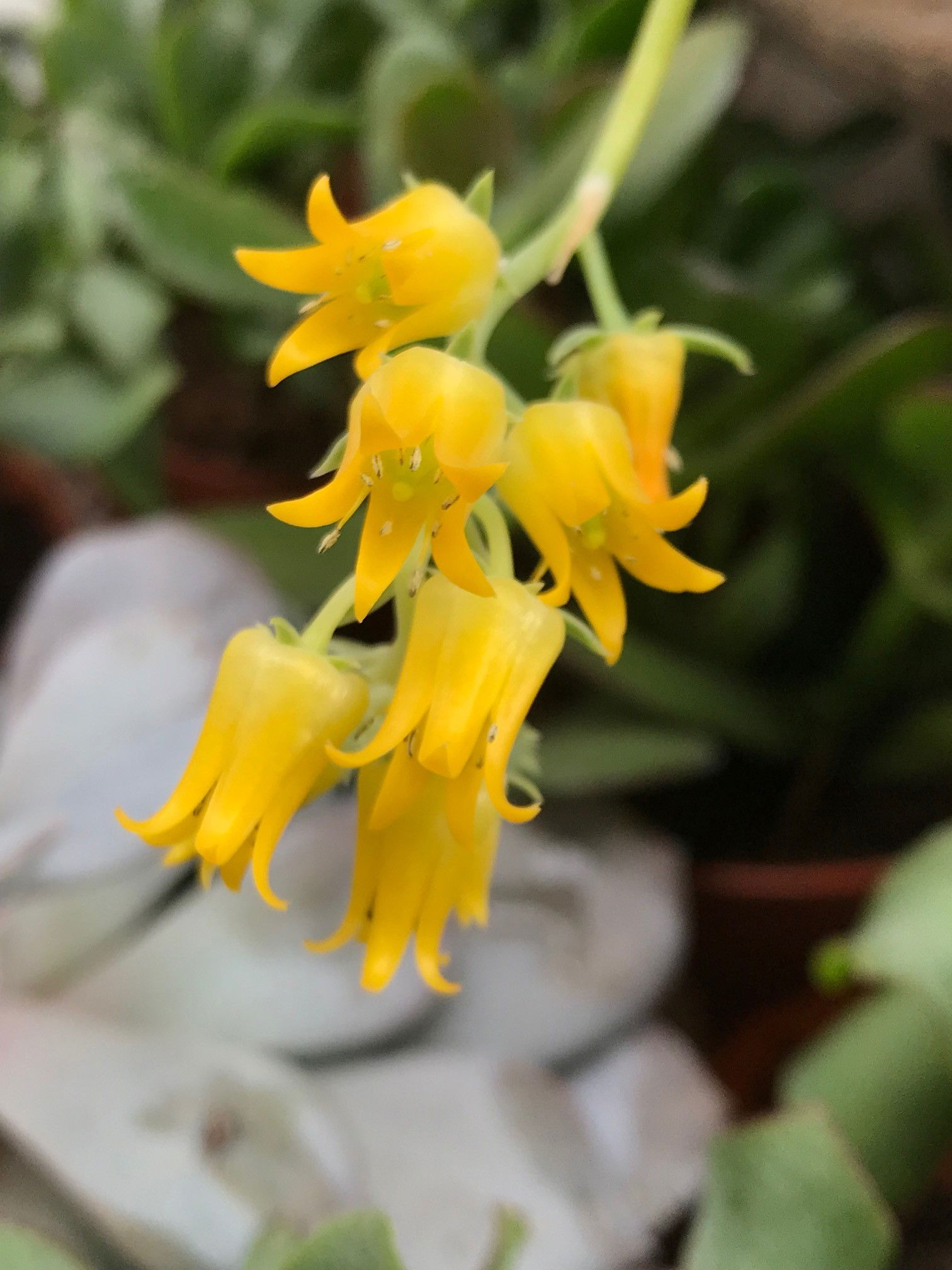 Pendulous flowers will appear in late spring, lasting several weeks.
Pendulous flowers will appear in late spring, lasting several weeks.
Repotting
Repot every two to three years in spring using a 'Cactus & Succulent' labelled potting mix and the next sized pot with adequate drainage. Aloes are a 'family plant' and therefore the mother plant can happily grow with its pups for many years, even if this means over-filling the pot. They prefer to be potbound as this will downplay the risk of over-watering (& root rot), so only repot if necessary or if you're interested in propagating the offsets to expand your Aloe collection.
For those who are happy to repot their plant, hydrate the soil 24hrs before tinkering with the roots to prevent the risk of transplant shock. Use a 'Cactus & Succulent' labelled potting mix and the next sized pot, unless the rootball is significantly reduced due to the propagation of pups. We recommend using a terracotta pot as this will help with drainage and moisture absorption.
Note - Book a 1-to-1 video call with The Houseplant Doctor™ (Author of ukhouseplants.com) if you'd like a personal guide to repotting your houseplant. This will include recommending the right branded-compost and pot size, followed by a live video call whilst you transplant the specimen for step-by-step guidance and answer any further questions!
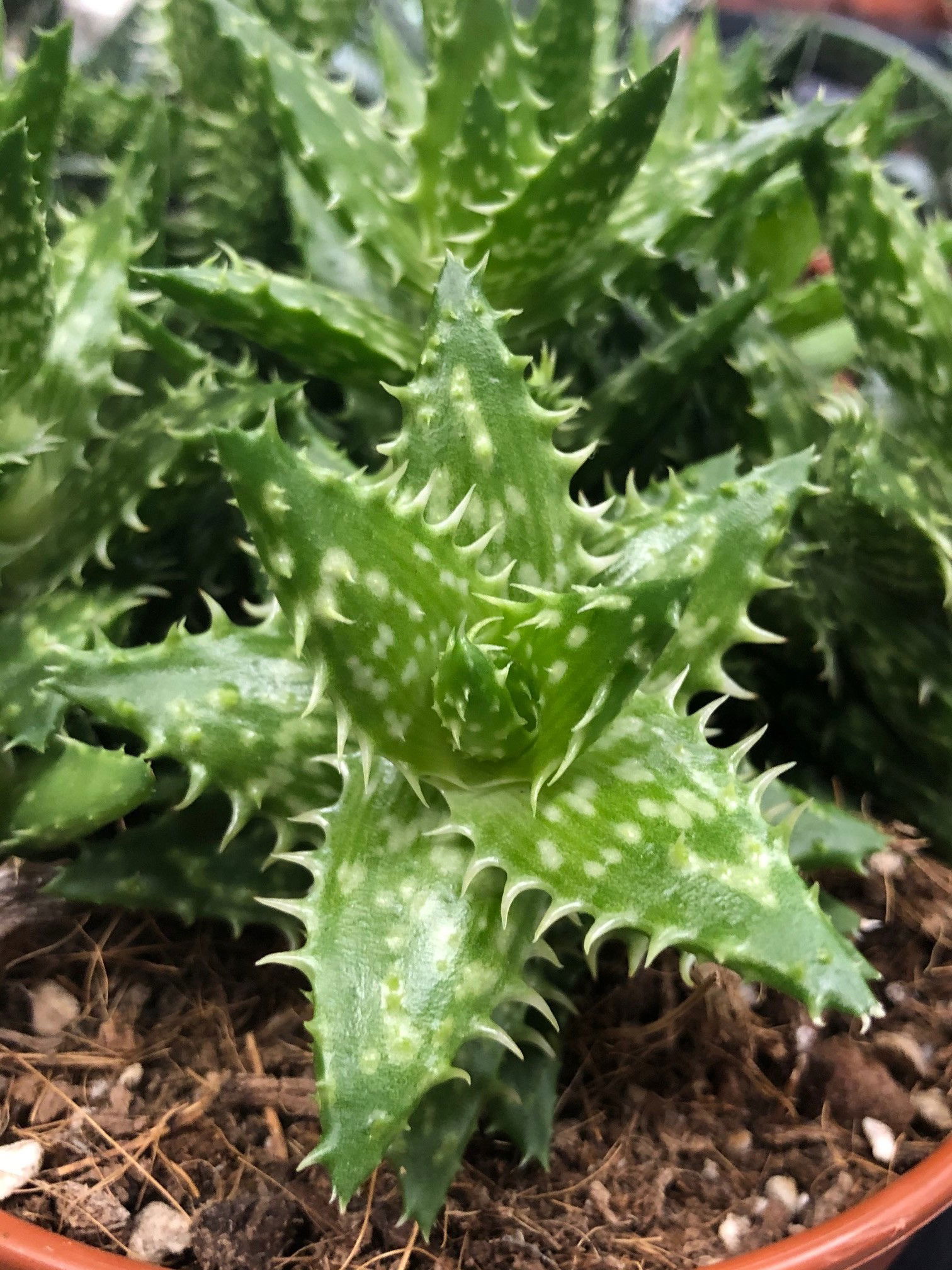 Aloe squarrosa
Aloe squarrosa
Pests & Diseases
Keep an eye out for vine weevils (uncommon indoors), spider mites & mealybugs. For more info on how to address any of these issues, hit this link. Common diseases with Aloes are root, crown or heart rot, sun-scald, soft rot, scabs, nematodes, leaf-spot disease and powdery mildew. Identifying Common Houseplant Diseases & Viruses
Toxicity
This genus is classified as poisonous. If parts of the plants are eaten, vomiting, nausea and a loss of appetite could occur. Consumption of large quantities must be dealt with quickly; acquire medical assistance for further information.
Retail Locations
B&Q, Dobbies, Homebase, IKEA, Online Stores.
Book a 1-to-1 Call with Joe Bagley
If you need further advice with your houseplants, book an advice call with ukhouseplants' friendly and expert writer today! This can be done via a video or audio call on most apps, including Facebook, FaceTime & Skype. A ten-minute call costs £5.99 (US$7), or £15.99 for thirty minutes. You can ask multiple questions, including queries on plants, pests, terrariums, repotting advice and anything in between. Please consider supporting this service to keep ukhouseplants thriving!
